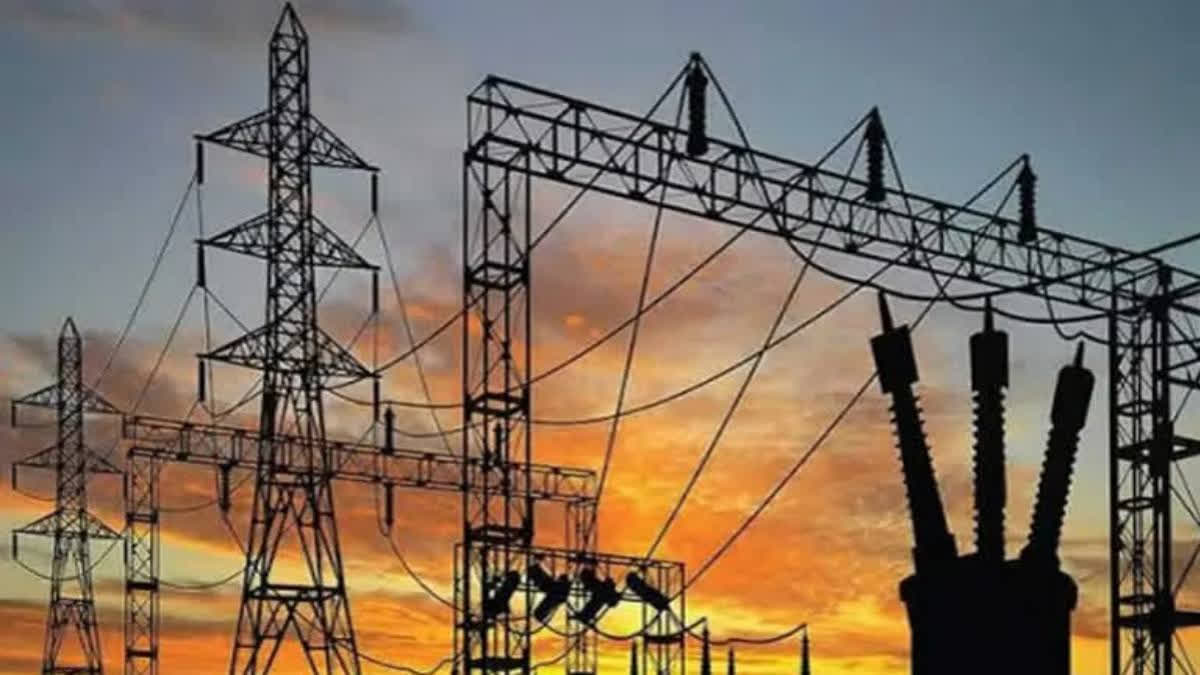New Delhi: Stating that India’s power generation has witnessed a significant increase in the last 10 years, Minister of State for Power Shripad Naik said that the capacity has been increased from 2,48,554 MW in 2013-14 to 4,46,190 MW in 2023-24.
“The installed capacity, which was 2,48,554 MW in March 2014, has been increased to 4,46,190 MW in June 2024. The installed capacity of coal-based power has increased from 1,39,663 MW in March 2014 to 2,10,969 MW in June 2024. The installed capacity of the renewable sector has increased from 75,519 MW in March 2014 to 1,95,013 MW in June 2024,” said Naik in a written reply in the Lok Sabha.
He said that 1,95,181 circuit kilometres of transmission lines, 7,30,794 MVA of transformation capacity and 82,790 MW of inter-regional capacity have been added connecting the whole country into one grid running on one frequency with the capability of transferring 1,18,740 MW from one corner of the country to another.
“India’s grid has emerged as one of the largest unified grids in the world. Connecting the whole country into one grid has transformed the country into one unified power market. Distribution companies can buy power at the cheapest available rates from any generator in any corner of the country thereby enabling cheaper electricity tariffs for consumers,” the minister said.
India has committed to augment non-fossil fuel-based installed electricity generation capacity to over 5,00,000 MW by 2031-32. Transmission plan for integration of 5,00,000 MW RE capacity is being implemented in a phased manner commensurate with RE capacity addition. The government has constructed Green Energy Corridors and put in place 13 Renewable Energy Management Centres.
“We have made efforts to make the power sector viable. The AT&C losses have come down from 22.62 per cent in 2013-14 to 15.40 per cent in 2022-23. All current payments of Gencos are up-to-date and the legacy dues of Gencos have come down from Rs 1,39,947 crore to Rs 35,119 crore. The subsidy payments to DISCOMS on account of subsidies announced by the State government are up-to-date,” Naik said.
He said that the cost of generation of electricity from coal-based power plants is dependent upon the price of coal and cost of freight and in the case of blending also the price of the blended imported coal.
“The price of imported coal is linked with International Indices, source of origin and factors like ocean freight and insurance, which vary with international demand-supply scenario. Furthermore, every generating company consumes imported coal as per its requirement. The average power purchase cost has increased by 71 paise only between FY 22 and FY 23. This is because of an increase in various costs, including an increase in Transmission and Distribution costs,” Naik informed.
He said that the Government of India has taken various steps to reduce the cost of power generation resulting in a reduction in the cost of electricity to consumers.
“Power Exchanges have been set up in the country to ensure fair, neutral, efficient and robust electricity price discovery. Distribution Companies (DISCOMs) can procure the power from these Power Exchanges and thus help to reduce the power purchase cost of DISCOMs,” he said.
Naik informed that the Government of India has also launched the Revamped Distribution Sector Scheme (RDSS) to help DISCOMs improve their operational efficiencies and financial sustainability by providing result-linked financial assistance to DISCOMs to strengthen supply infrastructure.
“The main objectives of RDSS are reduction of Aggregate Technical & Commercial (AT&C) losses to pan-India levels of 12-15 per cent by 2024-25 and reduction of average cost of supply per unit of power minus average revenue realised (ACS-ARR) gap to zero by 2024-25. Reduction in AT&C losses improve the finances of the utilities, which will enable them to better maintain the system and buy power as per requirements, benefitting the consumers,” Naik said.



